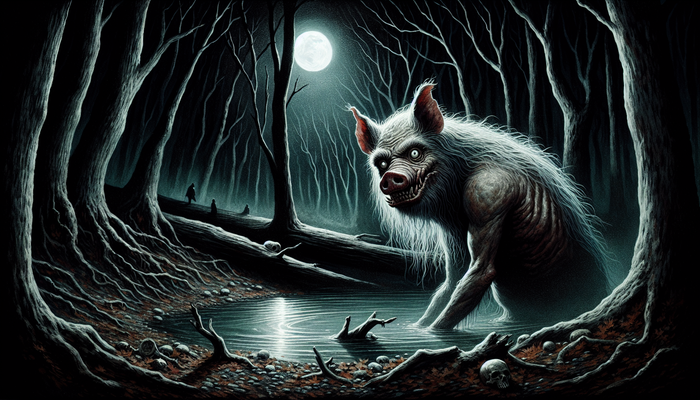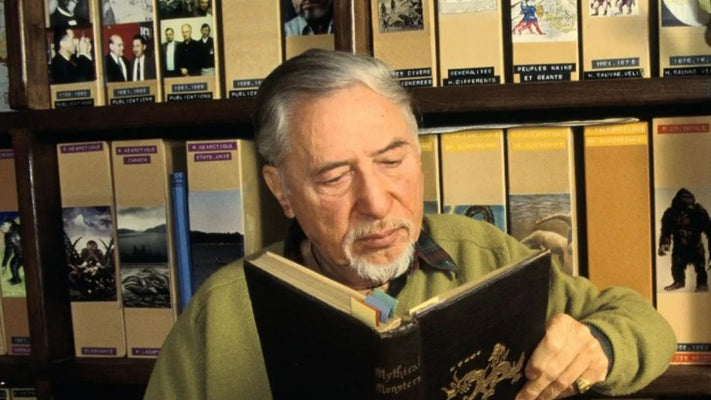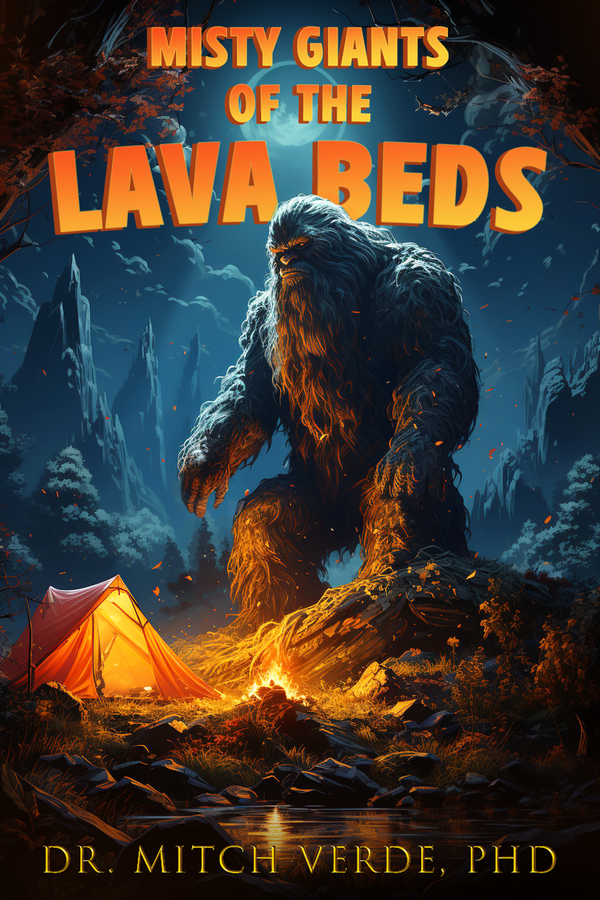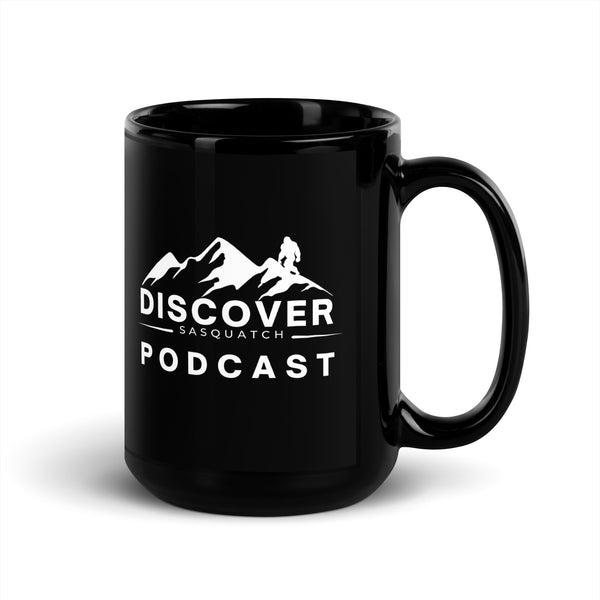Exploring Rhode Island Cryptids
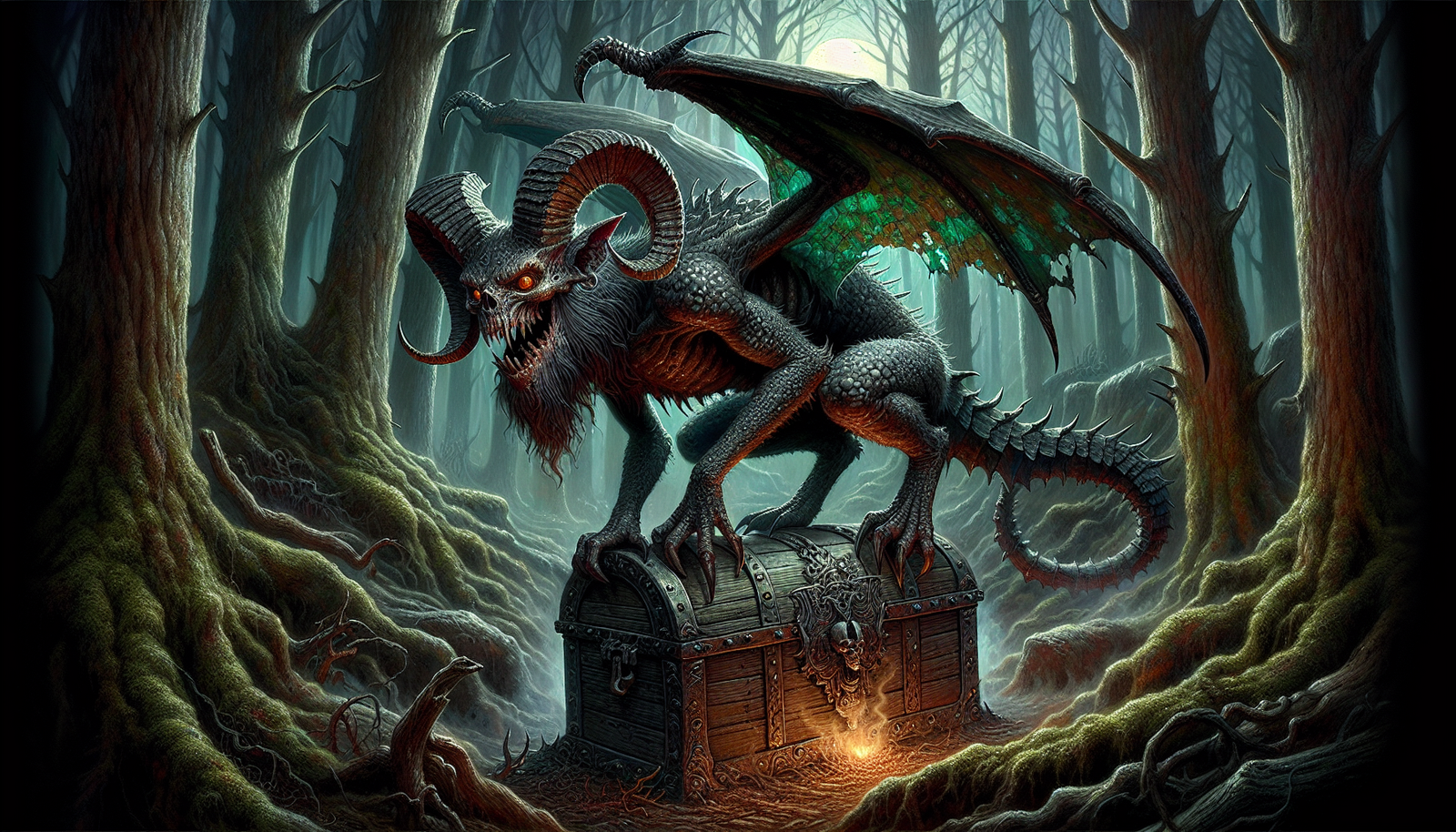
By Oliver Bennett, Cryptozoologist
Rhode Island may be the smallest state in the United States, but it certainly doesn't lack in the cryptid department. This unassuming corner of New England is home to a surprisingly rich tapestry of mysterious creatures, eerie legends, and spine-chilling tales that have captivated the imaginations of locals and cryptozoology enthusiasts for generations. From the fire-breathing Glocester Ghoul to the elusive Big Rhodey, Rhode Island boasts a veritable menagerie of cryptids that are as fascinating as they are terrifying.
As a lifelong student of the strange and unexplained, I've always been drawn to the hidden corners of our world where myth and reality blur together. And in my quest to unravel the mysteries that lie just beyond the veil of the ordinary, I've discovered that sometimes the most intriguing tales can be found in the most unlikely of places. Such is the case with Rhode Island, a state that, despite its small size, looms large in the annals of cryptozoology.
In this article, we'll embark on a journey through the Ocean State's most famous cryptid legends, delving into their origins, examining the evidence (or lack thereof) of their existence, and exploring the indelible mark they've left on local folklore and culture. From the dense forests of Glocester to the windswept shores of Block Island, we'll leave no stone unturned in our search for the truth behind Rhode Island's mysterious creatures.
So grab your hiking boots, ready your camera, and steel your nerves, because we're about to venture into the heart of New England's cryptid country. Whether you're a die-hard believer or a skeptical observer, one thing is certain: after reading this article, you'll never look at Rhode Island the same way again.
The Glocester Ghoul
Origins of the Legend
Our first stop on this cryptozoological tour of Rhode Island takes us to the sleepy town of Glocester, nestled in the northwestern part of the state. It's here, amidst the dense forests and rolling hills, that the legend of the Glocester Ghoul was born.
The story begins in 1839, when a notorious pirate by the name of Albert Hicks and his crew were allegedly searching for buried treasure in the woods near Glocester. As they dug feverishly in the darkness, their shovels striking against rocks and roots, a terrifying creature suddenly emerged from the shadows.
According to Hicks' account, the beast was as big as a cow, with a body covered in rattling scales, bat-like wings, spiral horns, and eyes that glowed like fiery orbs. As it approached the startled pirates, flames shot out of its mouth and nostrils, scorching the brush in its path. The men watched in horror as the creature let out an unearthly shriek before vanishing into the night as quickly as it had appeared.
The Ghoul's Description and Characteristics
Since that fateful night, the Glocester Ghoul has become a fixture of local folklore, with sightings and stories cropping up every few decades. While the creature's exact appearance seems to vary depending on the account, there are some consistent elements that emerge from the tales.
Most describe the Ghoul as a demonic hybrid of a ram and a bat, with a body covered in thick, rattling scales and leathery wings that span several feet. Its head is said to be adorned with a pair of twisted, spiral horns, and its eyes glow with an otherworldly, fiery light. Some accounts even claim that the creature can shoot fireballs from its eyes, adding to its already fearsome reputation.
Perhaps most disturbing of all is the Ghoul's alleged ability to breathe flames from its mouth and nostrils, setting the very air around it ablaze. Couple this with the foul, sulfurous odor that is said to accompany the beast, and it's no wonder that the mere mention of the Glocester Ghoul is enough to send shivers down the spines of even the bravest Rhode Islanders.
Theories and Speculation About the Ghoul's Nature
So what exactly is the Glocester Ghoul? That's the question that has puzzled cryptozoologists and paranormal enthusiasts for nearly two centuries. Some believe that the creature is a supernatural entity, summoned by the dark magic of pirates or cultists to guard their ill-gotten treasures. After all, if you had a chest full of gold doubloons, who better to protect it than a fire-breathing demon?
Others speculate that the Ghoul may be an undiscovered species of cryptid, a beast that has managed to evade capture and study by science for hundreds of years. Could there be a hidden population of these creatures lurking in the forests of northwestern Rhode Island, emerging only rarely to terrify unsuspecting witnesses?
And then there are those who propose an even more fantastical explanation: that the Glocester Ghoul is an interdimensional being, a creature that slips in and out of our reality at will. According to this theory, the Ghoul may be a visitor from another plane of existence, a realm where the laws of physics and biology operate very differently than our own.
The Ghoul's Impact on Local Folklore and Culture
Regardless of its true nature, there's no denying the impact that the Glocester Ghoul has had on local folklore and culture. For generations, the creature has been a staple of campfire stories and late-night tales, a boogeyman used to frighten children and thrill-seeking teenagers alike.
In recent years, the Ghoul has even become something of a mascot for the town of Glocester, with local businesses and events often incorporating the creature into their branding and themes. From Glocester Ghoul t-shirts to Halloween haunted houses, the beast has become an integral part of the town's identity and a source of quirky local pride.
But the Ghoul's influence extends beyond just Glocester. The creature has inspired countless works of art, literature, and film over the years, cementing its place in the pantheon of great American monsters. And for cryptozoology enthusiasts like myself, the Glocester Ghoul remains one of the most enduring and fascinating examples of a regional cryptid legend, a reminder that sometimes the strangest and most terrifying creatures may be lurking just beyond our backyards.
Big Rhodey: The Ocean State's Own Bigfoot
Sightings and Evidence of Big Rhodey's Existence
If the Glocester Ghoul represents the more fantastical side of Rhode Island's cryptid menagerie, then Big Rhodey is firmly grounded in the classic tradition of Bigfoot sightings that have captivated the American imagination for decades.
Also known as the "Rhode Island Bigfoot" or "Sasquatch of the East," Big Rhodey is said to roam the dense forests and swampy wetlands of the state's western region, particularly in the towns of Cumberland, West Greenwich, and Exeter. Over the years, there have been numerous reported sightings of the creature, with witnesses describing a large, hairy, bipedal humanoid that stands between 7 and 9 feet tall.
One of the most prominent Big Rhodey researchers is a man named Carl Johnson, who has dedicated much of his life to tracking down evidence of the creature's existence. Johnson claims to have collected a wealth of physical evidence over the years, including oversized footprint casts, hair samples, and even blurry video footage of a large, brownish figure lumbering through the woods.
In one particularly compelling piece of footage from 2021, a large, humanoid shape can be seen crouching behind a tree before quickly darting off into the forest. While the video is admittedly grainy and the figure is only visible for a few seconds, it's enough to make even the most skeptical viewer do a double-take.
Theories About Big Rhodey's Origins and Nature
So what exactly is Big Rhodey? Like most Bigfoot-type creatures, the theories about its origins and nature are varied and often contradictory.
Some believe that Big Rhodey may be a yet-undiscovered primate species, a relic population of hominids that has managed to survive in the remote corners of New England for thousands of years. Proponents of this theory point to the creature's reported size, bipedal stance, and ape-like features as evidence of its primate origins.
Others speculate that Big Rhodey could be a type of feral human or "wild man," a descendant of early settlers or Native Americans who, for whatever reason, chose to live apart from modern society. According to this theory, these individuals may have adapted to a rugged, wilderness lifestyle over generations, developing unique physical and behavioral characteristics along the way.
And then there are those who believe that Big Rhodey, like other Bigfoot creatures, may be a paranormal or interdimensional entity, a being that exists outside of our normal understanding of biology and physics. Some even go so far as to suggest that Bigfoot sightings are evidence of a larger, multiverse reality, with creatures like Big Rhodey serving as a kind of cosmic bridge between worlds.
Comparisons to Other Regional Bigfoot Legends
Of course, Big Rhodey is far from the only Bigfoot-type creature to have captured the public's imagination over the years. From the classic Pacific Northwest Sasquatch to the Skunk Ape of Florida, these hairy, humanoid cryptids seem to pop up in just about every corner of the country.
So how does Big Rhodey stack up against its more famous cousins? In many ways, the creature seems to fit the typical Bigfoot mold: a large, hairy, bipedal humanoid that is rarely seen but leaves tantalizing evidence of its existence in the form of footprints, hair samples, and blurry photographs.
However, there are some key differences that set Big Rhodey apart. For one, the creature is said to inhabit a much more densely populated and developed area than many other Bigfoot sightings, with reports coming from the suburbs and even the outskirts of major cities like Providence. This has led some to speculate that Big Rhodey may be more adapted to human presence than its more reclusive counterparts.
Additionally, some researchers have pointed to the creature's possible connection to the nearby Bridgewater Triangle in southeastern Massachusetts, a region known for its high concentration of paranormal activity and strange creature sightings. Could Big Rhodey be part of a larger, regional phenomenon that encompasses multiple states and cryptid legends? It's a tantalizing possibility that has yet to be fully explored.
The Significance of Big Rhodey in Rhode Island's Cryptid Lore
Regardless of its true nature or origins, there's no denying the significance of Big Rhodey in Rhode Island's rich tapestry of cryptid lore. For many locals, the creature has become a source of pride and fascination, a reminder that even in the smallest and most unassuming of states, there may be mysteries lurking just beyond the treeline.
In a way, Big Rhodey serves as a kind of mascot for Rhode Island's unique brand of cryptozoology, which often blends classic monster archetypes with local history and folklore. Just as the Glocester Ghoul represents the state's colonial past and piratical legends, Big Rhodey taps into the primal fear and wonder that humans have always felt towards the unknown creatures that may share our world.
Moreover, the Big Rhodey legend has helped to generate interest and enthusiasm for Rhode Island's natural areas and wildlife, with many amateur cryptozoologists and nature enthusiasts taking to the woods in search of the elusive creature. In a state that is often overshadowed by its larger and more famous neighbors, Big Rhodey has become a kind of cultural touchstone, a reminder that Rhode Island has its own unique identity and stories to tell.
The Block Ness Monster and Other Aquatic Cryptids
The Block Ness Monster Carcass of 1996
Of course, no discussion of Rhode Island cryptids would be complete without mentioning the state's rich tradition of aquatic monsters and sea serpents. And perhaps no creature embodies this tradition better than the infamous Block Ness Monster.
The story of the Block Ness Monster begins in 1996, when a group of fishermen hauled a strange, 14-foot carcass from the waters off the coast of Block Island. The creature was described as having a long, spear-like head, fleshy whiskers, and a serpentine body covered in thick, leathery skin.
News of the discovery quickly spread, and soon the carcass was being hailed as evidence of a previously unknown species of sea monster. The remains were even given a catchy nickname: the "Block Ness Monster," a play on the famous Loch Ness Monster of Scotland.
But the story took a bizarre turn when the carcass suddenly vanished from the freezer of a local biologist who had been studying it. Rumors swirled that the remains had been stolen by a rival researcher or perhaps even confiscated by government agents seeking to cover up the discovery.
Theories and Explanations for the Block Ness Monster
So what exactly was the Block Ness Monster? Like many cryptid carcasses, the true nature of the creature remains a mystery to this day.
The most likely explanation is that the remains were those of a basking shark, a large, slow-moving fish that is known to inhabit the waters around Block Island. When these sharks die and begin to decompose, their cartilaginous skeletons can take on a bizarre, almost monstrous appearance, with the lower jaw and gill arches often falling away to reveal a long, spear-like snout.
Indeed, many experts who have examined photographs of the Block Ness Monster carcass have concluded that it is almost certainly a basking shark, albeit one that had undergone significant decomposition and distortion. The fleshy "whiskers" described by the fishermen were likely the remains of the shark's gill rakers, which are used to filter plankton from the water.
However, some cryptozoology enthusiasts have proposed more fantastical explanations for the Block Ness Monster. Could it have been a previously unknown species of marine reptile, perhaps a surviving relic of the dinosaur age? Or maybe it was some kind of genetic mutant, a one-of-a-kind creature that defies classification?
These theories, while certainly intriguing, are generally dismissed by mainstream scientists as being unsupported by the available evidence. After all, the ocean is a vast and largely unexplored realm, and it's not uncommon for previously unknown species to be discovered from time to time. But the idea that a gigantic, monstrous creature could have evaded detection for so long stretches credulity to the breaking point.
From Bigfoot to UFOs: Hangar 1 Publishing Has You Covered!
Explore Untold Stories: Venture into the world of UFOs, cryptids, Bigfoot, and beyond. Every story is a journey into the extraordinary.
Immersive Book Technology: Experience real videos, sights, and sounds within our books. Its not just reading; its an adventure.


